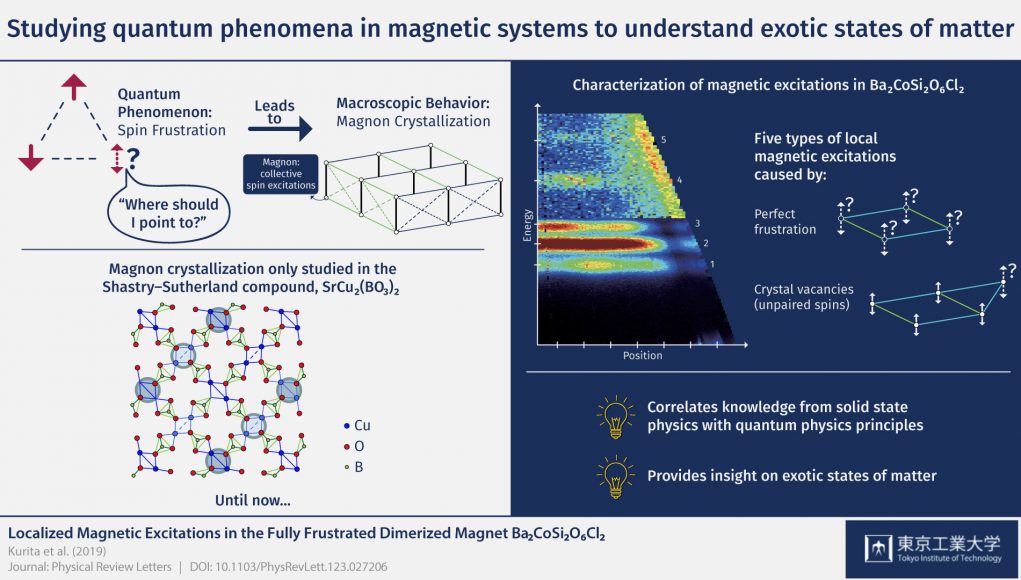Besides solids, liquids and gases, more exotic states of matter can be generated in specific materials under special conditions. Such states are of great interest to physicists because they provide a deeper understanding of quantum phenomena.
The Bose-Einstein condensate is one such state of matter that occurs at very low temperatures. In this state, most of the constituent particles of the condensate are in the so-called “ground state,” at their lowest possible energy, and microscopic quantum phenomena can be easily observed. Interestingly, this state can also be exhibited by quasiparticles, which are not actual particles but represent collective microscopic excitations in a system and can thus be used to describe the system in a simplified, yet very useful manner.
Magnons, a type of quasiparticle that manifests in magnetic materials, are collective excitations originating from electrons in a crystal. Magnons can normally hop between different locations in the crystal; however, in some compounds and under the effect of a magnetic field, they can be trapped in a kind of catch-22 situation, which results in rigid crystallinity. This is a very interesting quantum phenomenon called “magnon crystallization,” in which the magnons are said to be in a “frustrated” state.
To explore this peculiar effect, a team of scientists led by Prof. Hidekazu Tanaka from Tokyo Tech worked on characterizing the magnetic excitations occurring in a magnetic insulator, Ba2CoSi2O6Cl2. They performed neutron scattering experiments, in which neutron beams were fired onto Ba2CoSi2O6Cl2 crystals at different energies and angles to determine the properties of the crystals. Based on the results of these experiments, the team demonstrated that magnon crystallization occurs in Ba2CoSi2O6Cl2 and attributed the origin of this ordered state to the fundamental electronic interactions in the material, from a quantum-mechanical perspective. “Until recently, experimental studies on magnon crystallization have been limited to the Shastry-Sutherland compound SrCu2(BO3)2, and this study is an attempt to investigate this fascinating quantum phenomenon in a different material,” remarks Prof. Tanaka.
Understanding the ordering of magnons and their effects on the micro- and macroscopic magnetic properties of crystals could provide researchers valuable insight to correlate condensed matter physics with the principles of quantum mechanics. “This work shows that highly frustrated quantum magnets provide playgrounds for interacting quantum particles,” concludes Prof. Tanaka. Additional studies are required to further understand the Ba2CoSi2O6Cl2 system and gain a deeper foothold into quantum mechanics and its potential applications.
Find your dream job in the space industry. Check our Space Job Board »
Provided by: Tokyo Institute of Technology
More information: Nobuyuki Kurita et al. Localized Magnetic Excitations in the Fully Frustrated Dimerized Magnet Ba2CoSi2O6Cl2. Physical Review Letters (2019). DOI: 10.1103/PhysRevLett.123.027206
Image: We have probed the magnetic excitations of Ba2CoSi2O6Cl2 directly via inelastic neutron scattering measurements. The five observed types of magnetic excitationare dispersionless within the resolution limits, and hence triplet excitations are verified to be localized.
Credit: Tokyo Tech











